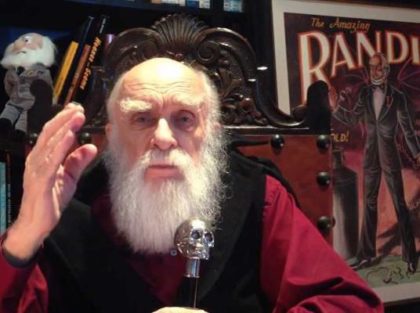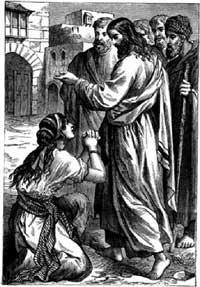Unitarian Universalist Congregation of Columbia
December 24, 2017
Rev. Jeff Liebmann
Call to Worship
by Christian Apologist Greg Koukl
Faith is not the opposite of reason. The opposite of faith is unbelief. And reason is not the opposite of faith. The opposite of reason is irrationality. Do some Christians have irrational faith? Sure. Do some skeptics have unreasonable unbelief? You bet. It works both ways.
Albert Einstein and God
Who can tell me the meaning of this? Why do you think you can’t? You can’t because this is written in a language you do not know. This is a mathematical equation created by a famous scientist named Albert Einstein. The characters in this equation describe how the force of gravity can bend fields of space and time, his theory of general relativity.

One time, an interviewer asked him about his religious beliefs and he answered with this story. “The human mind, no matter how highly trained, cannot grasp the universe. We are in the position of a little child, entering a huge library whose walls are covered to the ceiling with books in many different tongues. The child knows that someone must have written those books. It does not know who or how. It does not understand the languages in which they are written. The child notes a definite plan in the arrangement of the books, a mysterious order, which it does not comprehend, but only dimly suspects. That, it seems to me, is the attitude of the human mind, even the greatest and most cultured, toward God. We see a universe marvelously arranged, obeying certain laws, but we understand the laws only dimly. Our limited minds cannot grasp the mysterious force that sways the constellations.”
So here we had one of the most brilliant people in history who admitted that he did not know what was true about god or the greatest mysteries of existence. This is something we all can remember as we study the beliefs of other people. In order to understand others, you must be able to understand their language. And even then, there may be questions that still remain beyond our ability to know the answers.
Gospel of Mark, Chapter 4
At this point in the life of Jesus, he has walked on the water and fed the five thousand with five loaves and two fishes. John the Baptist has just been executed by King Herod Antipas. Jesus has just engaged in a debate with Pharisees over the interpretation of Hebrew law.
From there he set out and went away to the region of Tyre. He entered a house and did not want anyone to know he was there. Yet he could not escape notice, but a woman whose little daughter had an unclean spirit immediately heard about him, and she came and bowed down at his feet. Now the woman was a Gentile, of Syrophoenician origin. She begged him to cast the demon out of her daughter. He said to her, “Let the children be fed first, for it is not fair to take the children’s food and throw it to the dogs.” But she answered him, “Sir, even the dogs under the table eat the children’s crumbs.” Then he said to her, “For saying that, you may go – the demon has left your daughter.” So she went home, found the child lying on the bed, and the demon gone.
James Randi began his career as a celebrated stage magician and escape artist. For years, Randi has written books and made countless public appearances debunking pseudoscience. The world-renowned skeptic has long challenged all comers to demonstrate any paranormal,
 supernatural, or occult power or event under controlled conditions. In his career, Randi has exposed fakes and quacks of all stripes, from faith healers to psychics. Randi once described the magic community, saying, “I know of no calling which depends so much upon mutual trust and faith as does ours.”1
supernatural, or occult power or event under controlled conditions. In his career, Randi has exposed fakes and quacks of all stripes, from faith healers to psychics. Randi once described the magic community, saying, “I know of no calling which depends so much upon mutual trust and faith as does ours.”1I admire Randi’s work, but I do take exception to this particular quote. Because I do know of at least one calling that depends even more on mutual trust and faith than do magicians. And that calling is parenting a child.
A parent puts years of sweat and strain, constant attention and presence, and limitless compassion and love into raising a child. From their first steps to their driver’s license, a parent must increasingly trust their child to act boldly, but with caution; to explore new ideas, but heed the wisdom of their elders; to develop relationships, but stay emotionally sound. Most of all, a parent must have faith in their neighbors, their community, and their society that their child will receive a fair chance to learn; that their child will be sustained safe from harm; that their child will be cared for and kept healthy.
No, I think that parenting requires more mutual trust and faith than any other calling in our society. That is why the story of the Syrophoenician woman intrigues and informs us.
Let’s review the story as told in the Gospel according to Mark again. Jesus and his disciples leave Israel and go to the region of the City of Tyre, which is today in southern Lebanon. He enters a house and does not want anyone to know he is there. Perhaps he seeks rest from his difficult arguments with the Pharisees, or is fleeing a potential sentence of death from King Herod Antipas.
A non-Jewish woman – a Phoenician from Syria – whose daughter is ill, hears about Jesus. She comes to him and begs Jesus to cast the demon out of her daughter. Jesus replies, “Let the children be fed first, for it is not fair to take the children’s food and throw it to the dogs.” She replies, “Sir, even the dogs under the table eat the children’s crumbs.” Jesus then acknowledges the woman’s faith and heals her daughter.
Now, traditional Biblical scholars interpret this enigmatic exchange in the following way. The “children” Jesus would feed first are the Jews, the children of Israel. The “dogs” are the Gentiles, as many commentators have long argued that Jews in the first century commonly used the word for “dog” as a derogatory term to describe Gentiles. Again, traditional scholars agree – often with great reluctance and clarifying explanations – that Jesus is actually insulting the woman. Apologists for centuries explained that Jesus was merely testing the woman’s faith and not simply being, well, a total jerk.
 So, we have in this story a dedicated mother, persisting against numerous obstacles, to secure help for her sick little girl. The Syrophoenician woman represents the steadfast and tenacious love of a parent. She stands as a model of reverent piety, placing that which she holds dearest in life – her daughter – in the hands of this messiah.
So, we have in this story a dedicated mother, persisting against numerous obstacles, to secure help for her sick little girl. The Syrophoenician woman represents the steadfast and tenacious love of a parent. She stands as a model of reverent piety, placing that which she holds dearest in life – her daughter – in the hands of this messiah.That, of course, is the standard interpretation supported by many Biblical scholars. What happens, however, if we dig just a little deeper? The version of this story told in the Gospel of Matthew differs significantly from that of Mark in a number of small details. Matthew describes the woman not as a Syrophoenician, but as a Canaanite – historically the most contemptible enemy of the Jews.2 Ironically, this is the one and only use in the entire New Testament of this adjective. Also, in Matthew’s account, Jesus ignores her initial plea completely, standing silent as the disciples urge him to send her away. Why would a Gentile, this most hated enemy of Israel, persist in seeking aid from a Jewish rabbi?
This episode is not the first such instance in the gospels. Before this encounter, a Roman centurion approached Jesus in Capernaum on behalf of his afflicted servant. Jesus does not insult the centurion, nor does he test the soldier’s faith. Quite the contrary, Jesus extols on the faith of the centurion at great length.
Jesus later encounters other Gentiles in further Biblical accounts. But, only the Syrophoenician woman is subjected to ridicule by the one of history’s greatest paragons
of love. Believe it or not, many learned scholars argue that the diminutive form of the word used by Jesus actually means “puppy,” so that the insult was not quite so egregious as one might imagine. As one commentator put it, “as in English, so in other languages, to call a woman ‘a little bitch’ is no less abusive than to call her a ‘bitch’ without qualifications.”3
What is really happening here? Who is this woman? Are we really to believe that this is just some desperate housewife seeking a miracle cure from the first century version of an infomercial?
I believe that the truth of this encounter lies buried in ash piles, the victim – like so many other writings, like the Gnostic gospels – of the early Christian church’s purge of ideologies ruled as heresy by the Council of Nicea in 325 C.E. I believe that the Syrophoenician woman was not merely a random common individual. And, I believe, that the remnants of the story give us just enough clues to speculate as to who this unnamed mother really was.
For instance, Mark’s version of the story uses the adjective hellenis to describe the woman. Since the time of Alexander, the region had been Hellenized. That is, Greek culture and language dominated society, particularly in the cities and among the educated population. It has been argued that the Syrophoenician woman was a member of the Syrian upper class.4 Far from poor and destitute, the woman likely possessed education and resources of some financial worth. Perhaps she had exhausted the available standard remedies for her daughter. Could she have consciously decided to seek an unconventional solution to her dilemma, not out of desperation, but based on her research and reasoned examination?
Another piece of this puzzle is even more fascinating. The Cynic school of philosophy began in the fourth century B.C.E. The Cynics, from whom we get the notion of cynicism, rejected cultural standards and civilized presuppositions, often flouting conventions in shocking ways. We know of a woman Cynic, named Hipparchia, who boldly challenged her male peers in public and bested them in verbal challenges – just as the Syrophoenician woman bested Jesus in their exchange.5
 Diogenes, who we typically think of with his lamp seeking an honest man, is depicted in artwork living in a barrel. Often, Diogenes is surrounded by dogs in the portraits. The Cynics took their name from an early home of their school, the Greek word kyǒn, which means….dog. The Cynics took the dog as their common symbol. So, if the woman in our story traveled in the typical attire of a Cynic – with the wallet, staff, and ragged cloak with a bare right shoulder – ignored the social conventions a woman might be expected to follow, and made a verbal reference to the behavior of dogs, a reasonably educated person could have recognized her affiliation easily.
Diogenes, who we typically think of with his lamp seeking an honest man, is depicted in artwork living in a barrel. Often, Diogenes is surrounded by dogs in the portraits. The Cynics took their name from an early home of their school, the Greek word kyǒn, which means….dog. The Cynics took the dog as their common symbol. So, if the woman in our story traveled in the typical attire of a Cynic – with the wallet, staff, and ragged cloak with a bare right shoulder – ignored the social conventions a woman might be expected to follow, and made a verbal reference to the behavior of dogs, a reasonably educated person could have recognized her affiliation easily.So, now the story reads that a woman brazenly approaches Jesus (in Mark’s account entering this home of a stranger, violating all social rules of behavior of her time),
he calls her a dog, she accepts the metaphor, turns it to her advantage, and bests him in a verbal exchange. In the Greek-speaking world of first century Palestine, this narrative would only be interpreted as an encounter with a woman Cynic.
How does this knowledge modify our view of the encounter? First, it raises the interesting
 theory that Jesus himself was a Cynic.6 But, more relevant to our discussion today, the Syrophoenician woman represents a model character in the Bible for Unitarian Universalists. A loving mother, possibly of some means and highly educated, exhausts all reasonable solutions for her daughter’s illness. So, she examines the unconventional alternatives. Her philosophy of life eschews convention and dogma, so she consciously seeks out the assistance of another free spirit. She crosses every boundary of nationality, ethnicity, religion, and historical enmity – not out of desperation, but making a reasoned choice – to solicit aid from an unconventional source.
theory that Jesus himself was a Cynic.6 But, more relevant to our discussion today, the Syrophoenician woman represents a model character in the Bible for Unitarian Universalists. A loving mother, possibly of some means and highly educated, exhausts all reasonable solutions for her daughter’s illness. So, she examines the unconventional alternatives. Her philosophy of life eschews convention and dogma, so she consciously seeks out the assistance of another free spirit. She crosses every boundary of nationality, ethnicity, religion, and historical enmity – not out of desperation, but making a reasoned choice – to solicit aid from an unconventional source.Perhaps the woman knew nothing of the source of the power Jesus reportedly wielded. But, we know from earlier accounts in Mark (chapter 3) and Matthew (chapter 4), that news of his exploits had spread to Syria. The woman cast aside any natural disbelief and opened herself to the possibility of a force in the universe that she could not explain. With faith in her love for her daughter guiding her, she sought out someone she could trust, someone who demonstrated love for humankind – a love that manifested itself in helping the sick of body and of spirit. She approached him not as a supplicant, but as an equal seeking help from someone she recognized as a fellow nonconformist.
For Unitarian Universalists, the Syrophoenician woman demonstrates the merger of reason with the conviction to seek truth wherever it leads. The woman shows us that there may be forces and energies in our universe beyond our current comprehension, and that love can guide us toward acquiring from these mysteries a deeper wisdom.
Do you ever read your horoscope; or linger contemplatively over the pithy contents of a fortune cookie? Do you like to watch television shows about psychics or people who converse with the dead? Do you enjoy scary movies about ghosts, spectral entities, or aliens? Rest easy. You have not violated any Unitarian Universalist rule of etiquette; you need not pay a penance for gaining pleasure from a harmless entertainment. In fact, I would encourage any healthy exploration of phenomena that lie outside societal norms.
My personal guilty pleasure is tarot card reading. I know of no rational explanation proving that the particular handling of pieces of painted cardboard affords us any unique insight into cosmic trends and events. But, I have conducted enough readings to suggest the possibility that inanimate objects possess an aura; that aura can be manipulated; and that a talented raconteur can interpret the results in a way that provides comfort or exposes a viewpoint not previously considered by the seeker. The fact that charlatans exist in the field does not preclude the potential that some unknown truth exists.
So it is with love. We cannot quantify love. No forensic test validates the presence of love. But, there is more to love than chemicals and pheromones; there is more to love than sociological constructs of community and family; there is more to love than a sharing of neural impulses; and there is more to love than a creedal acceptance of proscribed obligations whose reward is eternal salvation.
 I trust that love permeates our lives. I have faith in the love I share with family and friends. We may justifiably view the daily tragedies of our mundane world with skepticism and derision. But, trust and faith in love can help us bridge the gaps in our reason. The union of faith and reason can help us build a church that can truly change the world.
I trust that love permeates our lives. I have faith in the love I share with family and friends. We may justifiably view the daily tragedies of our mundane world with skepticism and derision. But, trust and faith in love can help us bridge the gaps in our reason. The union of faith and reason can help us build a church that can truly change the world.The Christmas season celebrates birth and motherhood and the special bond between parent and child. The legend tells us that the babe in the manger grew into a man who recognized the power of one mother’s faith in love. He recognized her willingness to set aside her doubts to trust someone who manifested the essence of humankind’s potential for goodness, justice, and compassion. So, regardless of your interpretation of the nature of the life of Jesus or the historical veracity of Biblical accounts, consider the value of what his life and his ministry can represent to us as Unitarian Universalists. Open yourself to the wonder and mystery, like our sister, the Syrophoenician woman.
To that Energy of Spirit that we cannot describe, but which we all share;
With the Unity of Being known by many names that sustains us in loving community; Let us reside in a moment of prayerful reflection.
Hardly a day passes that we do not wonder if something greater than us exists in our universe. We seek answers to questions. We mine the depths of the ocean, the heights of the sky, and the furthest reaches of our minds to determine the causes of harm and hope; of disaster and delight; of loss and love.
We call upon our merged consciousness to show us the way to new paths through the frontiers of the unknown. May the essence of our life forces sustain us as we identify false trails and guides who seek only to mislead us on our journey. With the power of reason, may we discern truth from wishfulness. And may the united force of our love defend us in our search for meaning in our world and within ourselves.
Blessed be, amen, and let it be so.
by Pope John Paul II
I shall take my voice wherever there are those who want to hear the melody of freedom or the words that might inspire hope and courage in the face of despair and fear. My weapons are peaceful, for it is only by peace that peace can be attained. The song of freedom must prevail.
1. Randi was quoted in the February 2, 1974 issue of Abracadabra (a British conjuring magazine), according to http://en.wikipedia.org/wiki/Randi.
2. Gail O’Day. “Surprised by Faith: Jesus and the Syrophoenician Woman,” Listening 24 (1989), p. 291.
3. T.A. Burkill. “The Historical Development of the Story of the Syrophoenician Woman (Mark VII: 24-31),” Novum Testamentum 9:3 (July 1967), p. 170.
4. R.S. Sugirtharajah. “The Syrophoenician Woman,” Expository Times 98:1 (1986), p. 14.
5. F. Gerald Downing. “The Woman From Syrophoenicia, and Her Doggedness: Mark 7:24-31 (Matthew 15:21-28),” in George Brooke (ed.). Women in the Biblical Tradition, Studies in Women and Religion, Volume 31 (Lewiston NY: Edwin Mellen, 1992), p.140.
6. This view has been advocated most strongly by John Dominic Crossen in Jesus: A Revolutionary Biography (San Francisco: Harper Collins, 1994), and by Burton Mack in The Christian Myth: Origins, Logic, and Legacy (New York: Continuum, 2001).
